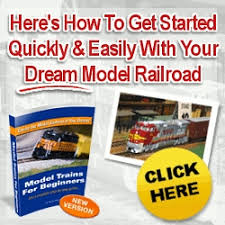"Ooooops!... The best laid plans go awry."
 Fortunately today's title does not refer to my layout construction this time, but rather to the construction of the Old Main Line itself... or more exactly, to the mills that would be serviced by the railroad. When Baltimore-area industrialists launched a plan to reach the middle of the country via their Baltimore & Ohio Railroad, savvy entrepreneurs staked out sites along the anticipated right-of-way. Or so they thought.The conventional thinking of the day was that the line would stay on the north side of the Patapsco River, nearer to Baltimore and therefore more likely cheaper to build. In anticipation of this, construction of several mills was begun before the track configuration was finalized. Big mistake!... Huge!
Fortunately today's title does not refer to my layout construction this time, but rather to the construction of the Old Main Line itself... or more exactly, to the mills that would be serviced by the railroad. When Baltimore-area industrialists launched a plan to reach the middle of the country via their Baltimore & Ohio Railroad, savvy entrepreneurs staked out sites along the anticipated right-of-way. Or so they thought.The conventional thinking of the day was that the line would stay on the north side of the Patapsco River, nearer to Baltimore and therefore more likely cheaper to build. In anticipation of this, construction of several mills was begun before the track configuration was finalized. Big mistake!... Huge! |
Once engineers determined that the track would be better built on the south side of the river, industries like the paper mill at Ilchester did not have direct access to the line. Both a conveyor and a team track were used here for the transfer of goods. |
 |
The flour mill at Ellicott City used a trestle to span the river accessing the plant with two spurs, but as motive power grew in size and weight, limits were put into place eventually negating their use. Freight was pushed and pulled across the bridge with the help of empty gondolas known as 'stretchers' to keep engines on the south side of the river. |
 |
The textile mill at Oella had further complications due to a difference in elevation. A winch was employed to pull freight across the trestle and used to control its roll back down toward the mainline. |
 |
The textile mill at Daniels WAS on the correct side of the river, however we know from the photo on the very first entry of this blog, the location proved less than ideal due to the river's proximity on three sides. |
These mills represented the largest customers on the Old Main Line, but accessibility and dependability were less than ideal initially, and only grew more troublesome with the advent of increased traffic and larger loads. Complicating things further, were the frequent mile-long coal trains that disrupted these unusual movements.While these make for great 'Layout Design Elements' and fun operating in 1:87, it was not good business for the B&O. There would be changes coming.Thursday we get back to the next step with bench work... risers and sub-roadbed.
-30-?
BONUS: RHETORICAL QUESTION OF THE DAY...
Which TV character would have been best suited to explain to mill owners why the B&O chose to build across the river from them?
A) Cliff Claven from 'Cheers'
B) Ralph Kramden from 'The Honeymooners'
C) George Costanza from 'Seinfeld'
D) Arthur Fonzarelli from 'Happy Days'
?





No comments:
Post a Comment